Goodbye Biafra! Air war in Nigeria 1967-70 YY.
Twenty years after the end of the Second World War, almost all countries of the African continent became independent, except for a few minor Spanish possessions on the west coast and the large Portuguese colonies of Mozambique and Angola. However, achieving independence did not bring peace and stability to the African land. Revolutions, local separatism and tribal struggle kept the “black continent” in constant tension. Virtually no state has escaped internal and external conflicts. But the most massive, brutal and bloody was the civil war in Nigeria.
In 1960, the English colony of Nigeria received the status of a federative republic within the British Commonwealth of Nations. At that moment, the country was a collection of several tribal territories, “in the spirit of the times” renamed to the provinces. The richest in fertile land and mineral resources (primarily oil) was the Eastern Province, inhabited by the Igbo tribe. The authorities in the country traditionally belonged to immigrants from the northwestern Yuruba (Yoruba) tribe. Contradictions were aggravated by the religious problem, since the Igbo professed Christianity, and the Yurubians and the large northern Hausa people who supported them were adherents of Islam.
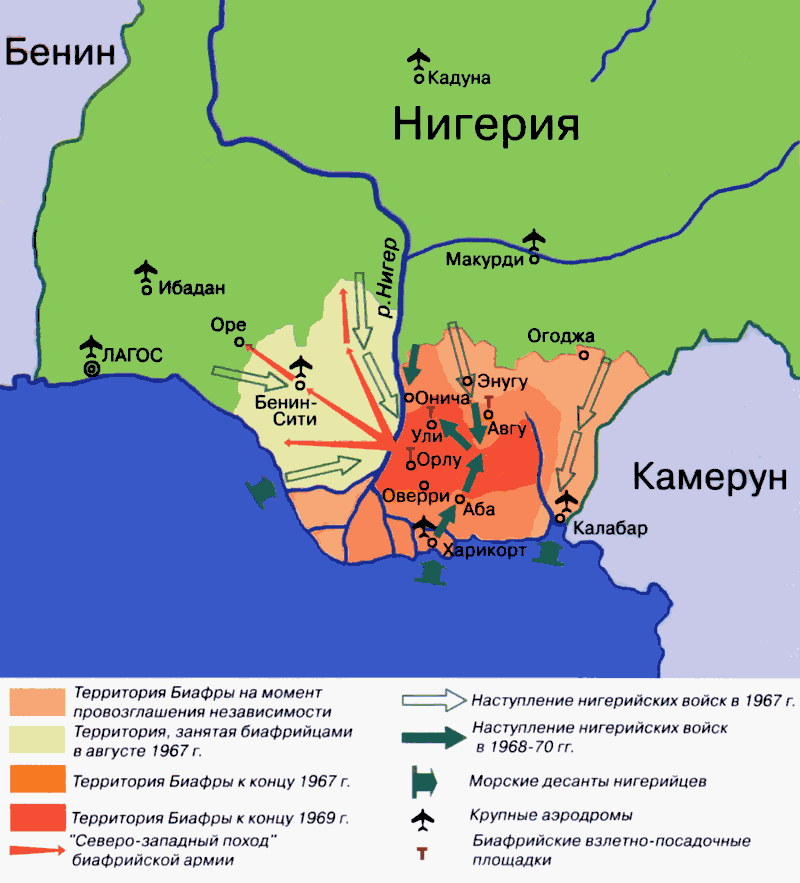
15 January 1966, a group of young Igbo officers organized a military coup, briefly seizing power in the country. Yuruba and Hausa responded with pogroms and a massacre, the victims of which were several thousand people, mostly from the Igbo tribe. Other nationalities and a significant part of the army also did not support the coup, as a result of which a counter-revolution occurred on July 29, which led to the authority of the Muslim Colonel Yakubov Govon from a small northern Angas tribe.
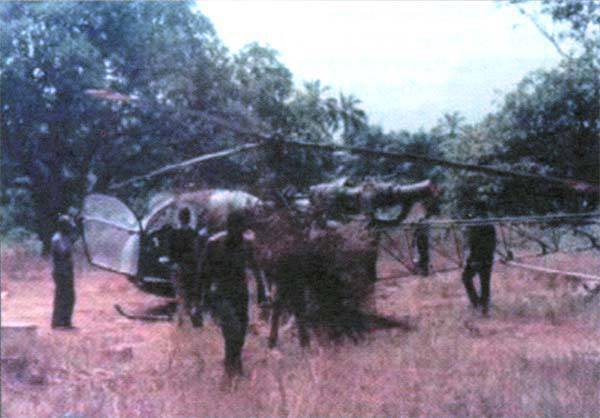
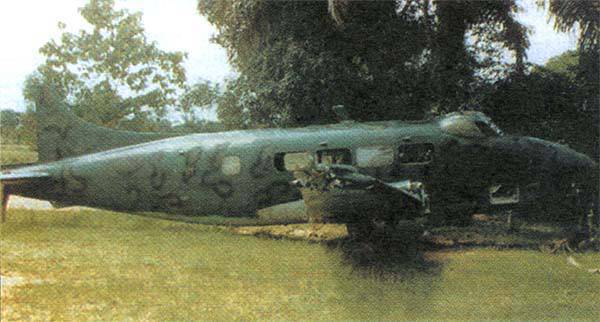
The new authorities could not establish control over the situation. Riots and tribal slaughter continued, covering all new areas of Nigeria. They acquired a particularly large scale in September of 1966.
By the beginning of 1967, the governor of Eastern Province, Colonel Chukwuemeka Odumegvu Ojukvu, decided to separate from the Nigerian federation and form his own independent state called Biafra. The majority of the population of the province, frightened by the wave of pogroms, welcomed this decision. The seizure of federal property began in Biafra. In response, President Govon established a naval blockade of the region.
The formal reason for the proclamation of independence was the decree of 27 of May 1967, according to which the country's division into four provinces was abolished, and 12 states were introduced instead. Accordingly, the posts of governors were abolished. Reaction Ojukvu followed immediately. May 30 Eastern Province was declared the sovereign Republic of Biafra.
President Govon, of course, could not accept the loss of the richest region of the country. 6 June he ordered the suppression of the insurgency and announced mobilization in the northern and western Muslim states. In Biafra, hidden mobilization began even before independence was declared. Troops from both sides began to pull up to the Niger River, which turned into a line of armed confrontation.
Consider what constituted the air force of the warring parties.
The Nigerian Air Force as a separate type of armed forces appeared in August 1963, with technical support from Italy, India and West Germany. They were based on X-NUMX single-engine multi-purpose Dornier Do.20, 27 training Piaggio P.14D and 149 Nord 10 Noratlas. By the beginning of 2501, several more helicopters of various types and two jet prowess jet trainers had been acquired. The pilots were trained in Germany and Canada. In June, the military authorities mobilized six transport and passenger DC-1967 airlines “Nigerian Airways” in June 1967, and a year later five more such vehicles were purchased.
Transport aviation at the very least, the Nigerian army was provided, but with the outbreak of the civil war, it faced two important problems - the acquisition of combat aircraft and the replacement of pilots - most of whom came from the Igbo tribe who fled to Biafra and stood under the banners of Ojukwa.
The situation was aggravated by the fact that a number of Western countries (including France, Spain and Portugal) secretly supported the separatists in one form or another. The United States announced its non-intervention and imposed an embargo on the supply of arms to both belligerents. But to help the leadership of Nigeria came the "brothers in faith" - the Islamic countries of North Africa.
By a small air force, by June 1967 had also Ojukwu. The HS.125 passenger Hauker-Siddley was owned by the government of the Eastern Province during the time of its entry into Nigeria. He was considered the personal "board" of the governor, and later - the president. The 23 of April (that is, even before the official declaration of independence) in the future capital of Biafra Enugu was captured by the Fokker F.27 airliner Friendship from Nigerian Airways. Local craftsmen converted this plane into an improvised bomber.
In addition, at the very beginning of the conflict, several civil airplanes and helicopters were “mobilized” (or rather captured) at the airport of Harikort, including four Heeler UH-12E light helicopters, two Vijon helicopters and one twin-engined helicopter aircraft "Douv", owned by various companies and individuals. At the head of Biafra Aviation was Colonel (later - General) Godwin Ezelio.
Events in the meantime developed incrementally. On July 6, federal troops launched an offensive from the north in the direction of Enugu. The operation, called "Unicord", was planned as a short police action. The commander of the government army, Colonel (later - Brigadier General) Hassan Katsine optimistically stated that the rebellion will be over "within 48 hours." However, he underestimated the rebel forces. The attackers immediately ran into tough defenses and the battles assumed a protracted, tenacious character.
The aerial bombardment of the positions of the 21 Infantry Battalion by the B-26 "Invader" aircraft with Biafra identification marks was a real shock for the soldiers of the federal army. History the appearance of this plane in the rebels deserves a separate story. Previously, "Invader" belonged to the French Air Force, participated in the Algerian campaign, and then was written off as obsolete and disarmed. In June, a Belgian merchant acquired 1967. weapons Pierre Laurey, who overtook a bomber in Lisbon and resold it to some Frenchman.
From there, a car with a fake American registration number and without a certificate of airworthiness flew to Dakar, then to Abidjan and, finally, 27 June reached the capital Biafra Enugu. We describe in detail the “odyssey” of the ancient bomber, since it eloquently shows how the winding ways the Biathrians had to replenish their arsenals.
In Enugu, the aircraft was again equipped with a bomb ejector. The pilot's place was taken by a “veteran” of mercenaries who came from Poland, Jan Zumbach, who was also known for the 1960-63 Congo campaign. In Biafra, he appeared under the pseudonym John Brown, taking the name of a famous American rebel. Soon, for his desperate bravery, his colleagues called him “kamikaze” (in one of the articles it is written that Invader was piloted by a Jewish Jewish pilot named Johnny, although this may be the same person).
In Nigeria, Zumbah made his debut on July 10, dropping bombs on the airfield of the federal forces in Makurdi. According to his report, several transport aircraft were damaged. Up until mid-September, when the elderly “Invader” had completely lost its fighting capacity due to breakdowns, a desperate Pole regularly bombed government troops. From time to time he also made long-range raids on the cities of Makurdi and Kaduna, where airfields and federal supply bases were located. Since July 12, DC-3 has begun to support it, confiscated by the rebels from Bristouse. 26 July 1967, the Invader and Dakota, dropped bombs on the frigate Nigeria, which blocked the city of Harikort from the sea. The results of the raid are unknown, but, judging by the continued blockade, the target was not able to hit.
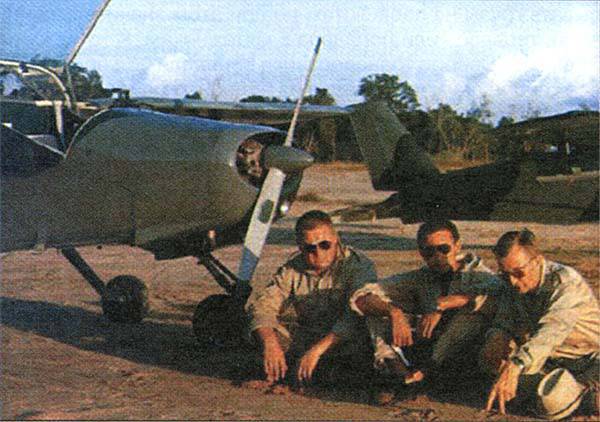
Of course, a couple of “ersatz bombers” could not really influence the course of the war. In July and August, the columns of the Nigerian army, overcoming stubborn resistance, continued the offensive on Enugu, capturing the cities of Ogodzha and Nsukka.
Soon the Air Force Biafry replenished with another "rarity" - the B-25 "Mitchell" bomber. According to some data, it was piloted by a German mercenary, a former Luftwaffe pilot, a certain “Fred Hertz” (mercenaries usually used pseudonyms, and therefore this and the following names were quoted). Another source indicated that a pilot from Cuban émigrés who had settled in Miami flew to Mitchell, and the crew included two more Americans and a Portuguese. The aircraft was based at Harikort, almost nothing is known about its combat use. In May, 1968-he was captured at the airport by the federal troops who entered the city.
In early August, another B-26 appeared in Biafra, also acquired through the intermediary of the already-mentioned Belgian Pierre Laurey. The French mercenary “Jean Bonnet” and the German “Hank Wharton” (aka Heinrich Wartski) flew on it. 12 August already two “Invader” bombed the position of government troops on the west bank of Niger. This was preceded by the beginning of a powerful rebel strike in the direction of the capital of Nigeria, Lagos.
On August 9, a mobile brigade of the Biafra army as part of an 3000 man, with the support of artillery and armored vehicles, crossed over to the west coast of Niger, launching the so-called “north-west march”. First offensive developed successfully. The Biathrians entered the territory of the Midwest state, almost without meeting any organized resistance, since the federal troops stationed there largely consisted of Igbo tribesmen. Some parts simply fled or went over to the rebels. The state capital of Benin City surrendered without a fight after only ten hours after the start of the operation.
But a few days later the victorious march of the Biathrians was stopped near the city of Åre. After a general mobilization in a densely populated metropolitan area, the military leadership of Nigeria received a significant numerical superiority over the enemy. By the beginning of September, two divisions of government troops were already operating against one brigade and several separate rebel battalions on the western front. This allowed the feds to take the offensive and push the enemy back to the city of Benin City. On September 22, the city was stormed, after which the Biathrians hastily retreated to the east coast of Niger. The “North-Western campaign” ended at the same turn where it began.
Trying to tip the scales to their side, the rebels launched regular air raids on the capital of Nigeria in September. The mercenaries who piloted the Biathri vehicles did not risk almost anything. The anti-aircraft artillery of the government forces consisted of several guns from the Second World War, and there was no fighter aircraft at all. It was necessary to be afraid only of failures of the worn out equipment.
But the damage from these raids, in which a pair of Invaders, passenger Fokker and Dakota dumped improvised bombs from scraps of pipes, was insignificant. Calculation on the psychological effect is also not justified. If the first raids caused panic among the population, then soon the citizens were accustomed and the next bombing only increased the hatred of the rebels.
The air assault on the capital ended on the night of 6 on October 7, when Fokker exploded right above Lagos. Here is what the then ambassador of the USSR in Nigeria A.I. Romanov writes in his memoirs: “In the morning there was a terrible explosion, we jumped up from the bed, jumped out into the street. Only the sound of engines was heard, but it is impossible to establish where the bomb dropped. Then the roar of the plane intensified, followed by a new bomb blast. A few minutes later the explosions repeated. And suddenly, apparently, somewhere on the island of Victoria there was a powerful explosion, a bright flame lit up the night before dawn ... and everything was quiet.
Five minutes later, the telephone rang, and the embassy on duty said in an agitated voice that the embassy building had been bombed. Two hours later, we learned that there was not a bomb explosion, but something else: in the air, almost over the embassy building, the plane of the separatists exploded, and a powerful blast wave caused the building a lot of damage. "
At the site of the fall of the wreckage of the plane, 12 corpses were found, of which four were bodies of white mercenaries - members of the crew of an exploding aircraft. Later it turned out that the pilot of the "bomber" was a certain "Jacques Langhuum", who had previously successfully survived an emergency landing at Enugu with a load of smuggled weapons. But this time he was unlucky. Most likely, "Fokker" died due to an accidental explosion aboard a homemade bomb. There is also a version according to which the plane was shot down by air defense, but it seems very unlikely (Romanov, by the way, does not write anything in his memoirs about firing anti-aircraft guns).
Meanwhile, in the north, government forces, overcoming stubborn resistance, approached the capital Biafra Enugu. October 4 city was taken. At the airfield, the rebels abandoned the faulty Invader, which became the first air trophy of the feds. With the loss of Enugu Ojukwu, the small town of Umuahia declared its temporary capital.
On October 18, after intensive shelling from warships, six battalions of marines landed in the port of Calabar, which defended one rebel battalion and poorly armed civilian police units. Simultaneously, the 8 th battalion of government infantry approached the city from the north. The resistance of the Biathrians between the two fires was broken, and the largest seaport in southern Nigeria came under the control of government forces.
A few days earlier, another Nigerian naval assault force had captured oil fields on Bonny Island, 30 kilometers from Haricort. As a result, Biafra lost its main source of foreign exchange earnings.
The rebels tried to beat off Bonnie. The only remaining “Invader” bombed the positions of Nigerian paratroopers daily, inflicting heavy losses on them. However, despite this, the feds defended themselves bravely, repelling all counterattacks. In desperation, the rebel command ordered the pilot to bomb the storage tanks, hoping that a powerful fire would force the paratroopers to evacuate. But it did not help. In the hellish heat and thick smoke, Nigerians continued to persevere. Soon the battle for Bonnie stopped. The island with the burning ruins of oil fields remained for the feds.
By December, 1967-th government forces won a number of important victories, but it was clear to everyone that it was still very far from the final suppression of the rebellion. Instead of a lightning "police action" turned out a grueling protracted war. And for the war required a large number of weapons and military equipment.
The main problem of the federal Air Force in the first months of the conflict was the complete absence of the strike component. Of course, Nigerians could go "dear poor" and turn their "Noratlas", "Dakota" and "Dornier" in the "self-made" bombers. But the command considered this way irrational and ineffective. We decided to resort to foreign procurement. The only western country that provided diplomatic and moral support to the central government of Nigeria was the United Kingdom. But at the request of the Nigerians to sell combat aircraft, the British refused. The only thing that was possible to acquire in Albion is nine Westland Wyrluind II helicopters (an English licensed copy of the American Sikorsky S-55 helicopter).
Then the authorities of Lagos appealed to the USSR. The Soviet leadership, obviously hoping over time to convince Nigerians to “follow the path of socialism,” reacted favorably to the proposal. In the autumn of 1967, Nigeria’s foreign minister, Edwin Ogbu, arrived in Moscow and arranged to buy 27 MiG-17F fighters, 20 combat-training MiG-15UTI fighters and six Il-28 bomber. At the same time, Moscow "gave the go-ahead" for the sale by Czechoslovakia of the 26 training and combat aircraft L-29 "Dolphin". Nigerians paid for the planes with large deliveries of cocoa beans, providing Soviet children with chocolate for a long time.
In October, the 1967 th Kano airport in Severo-Nigeria was closed for civil flights. Here from the Soviet Union and Czechoslovakia, An-12 began to arrive through Egypt and Algeria with dismantled MiGs and Dolphins in cargo compartments. In total, 12 transporters participated in the aircraft delivery operation. In Kano, fighters were collected and flown. Ilyushin's bombers arrived from Egypt on their own.
Here, in Kano, they organized a repair base and a flight training center. But local training would take too much time. Therefore, for the beginning, they decided to resort to the services of Arab “volunteers” and European mercenaries. Egypt, possessing a large number of pilots who were able to fly Soviet cars, without hesitation sent some of them on a "Nigerian business trip." By the way, on the other side of the front line the then sworn enemies of the Egyptians acted - Israeli military advisers trained the Biafra army.
The Western press in those days argued that, in addition to the Egyptians and Nigerians, Czechoslovak, East German and even Soviet pilots were fighting at MiGs in Biafra. The Nigerian government categorically denied this, and the Soviet did not even consider it necessary to comment. Be that as it may, there is still no evidence of such assertions.
Meanwhile, Nigerians did not hide the fact that some combat vehicles were piloted by mercenaries from western countries, in particular from Great Britain. Her Majesty's government "closed their eyes" to a certain John Peters, who had previously led one of the teams of mercenaries in the Congo, who in 1967 had launched a stormy activity in England to recruit pilots for the Nigerian Air Force. Each of them was promised a thousand pounds a month. Thus, many adventurers from England, Australia and South Africa signed up for Nigerian aviation.
The French, on the other hand, took the whole side of Ojukwu. Large batches of French weapons and ammunition were transferred to Biafra via an “air bridge” from Liberville, San Tome and Abidjan. Even types of weapons, such as Panard cannon armored vehicles and 155-mm howitzers, came to the unrecognized republic from France.
The Biathrians tried to purchase combat aircraft in France. The choice fell on the “Fugue” by SM.170 “Master” that has already manifested itself in local conflicts more than once. In May, 1968-th five of these machines were purchased through a false Austrian company and disassembled, with undocked wings sent by air to Portugal, and from there to Biafra. But during a stopover in Bissau (Portuguese Guinea), one of the transport constables, carrying the “Magisters” wings, crashed and burned. The incident was suspected of sabotage, but it is unlikely that the special services of Nigeria could "crank" such a serious action. The fuselages without wings that were no longer needed to rot on the edge of one of the Portuguese airfields.
In November, 1967-th Nigerian strike aircraft entered the battle. True, as targets, she was more often assigned not military objects of the rebels, but rear cities and towns. The feds thus expected to destroy the infrastructure of the rebels, to undermine their economy and sow panic among the population. But, as with the bombings of Lagos, the result did not live up to expectations, although there were much more casualties and destruction.
December 21 Ilah bombed a large industrial and commercial city of Aba. Many houses were destroyed, including two schools, 15 civilians died. Aba’s bombing continued until the city was occupied by federal troops in September on 1968. The 23-25 raids of April were particularly intense, vividly described by the English journalist from the Sunday Times, William Norris: “I saw something that was impossible to watch. I saw the corpses of children, riddled with shrapnel, old men and pregnant women, torn by bombs into pieces. All this was done by Russian jet bombers belonging to the Nigerian federal government! ”Norris didn’t mention that not only Arabs and Nigerians but also his compatriots were sitting in the cabins of these bombers themselves ...
In addition to Aby, Onich, Umuahia, Oguta, Uyo and others were attacked. In total, at least the most 2000 people died in these raids. Accusations of inhuman warfare rained down on the government of Nigeria. One exalted American even burned himself in protest in front of the UN building. Nigeria’s President Yakubu Govon stated that the insurgents allegedly “hide behind civilians and in these cases it’s very difficult to avoid unnecessary casualties.” However, the photographs of the murdered children outweighed any arguments. In the end, the Nigerians, in order to maintain international prestige, were forced to abandon the use of IL-28 and the bombing of civilian objects.
In January, the 1968 government forces launched an offensive from Calabar in the direction of Harikort. For almost four months, the rebels managed to restrain the onslaught, but 17 in May the city fell. Biafra lost the last seaport and a large airfield. In Haricort, Nigerians captured all of the enemy’s bomber aircraft — Mitchell, Invader, and Dakota. However, due to breakdowns and lack of spare parts, none of these machines could take off for a long time.
In the fight against the government air forces, the rebels could only count on anti-aircraft artillery. They concentrated almost all of their anti-aircraft guns around Uli and Augu airfields, realizing that with the loss of access to the sea, the connection between Biafra and the outside world depends on these runways.
The vital importance for Biafra of foreign supplies was also determined by the fact that hunger began in the province due to war and sea blockade. In those days, programs News many European television stations were broadcasting reports of exhausted Igbo babies and other horrors of war. And that was not pure propaganda. In 1968, in the more recently richest region of Nigeria, starvation became commonplace.
Things reached the point that US presidential candidate Richard Nixon said in his speech during the election campaign: “What is happening in Nigeria now is genocide, and hunger is a cruel killer. Now is not the time to follow all sorts of rules, use normal channels or adhere to the diplomatic protocol. Even in the most just wars, the destruction of an entire people is an immoral goal. It can not be justified. You can't put up with him. ”
Although the US government didn’t push this diplomatic recognition of the rebellious republic, the Quartet “Super Constellations” with the American crews began to deliver food and medicine to Biafra without the consent of the Nigerian authorities.
At the same time, the gathering of humanitarian aid for Biathrians began all over the world. Since the autumn of 1968, tens of tons of cargo have been shipped daily to insurgents on airplanes rented by various charitable organizations. Often, along with the "humanitarian aid" and delivered weapons. In response, the federal command ordered the mandatory inspection of all aircraft crossing the borders of the country, and stated that it would shoot down any aircraft if it did not land for such an inspection. For several months, Nigerians could not realize their threat, although illegal flights to Biafra continued to be made. This continued until March 21 1969, when a pilot of one of the MiG-17 intercepted DC-3, whose crew did not respond to radio messages and tried to escape from the chase in the shaving space. The Nigerian was about to give a warning line, but suddenly Dakota caught on the tops of the trees and fell to the ground. The ownership of this car, fallen and burned in the jungle, remained unexplained.
Despite the death of the “no one” DC-3, the air bridge continued to “gain momentum”. The aircraft to Biafra sent the International Red Cross (ICC), the World Council of Churches and many other organizations. The Swiss Red Cross leased two DC-6A from Belair, the IWC - four C-97 from the same company, the French Red Cross used DC-4, and the Swedish - Hercules, formerly owned by the air force. The West German government used the conflict as a testing ground for testing the third prototype of the newest transport aircraft C-160 Transall. The German pilots, flying from Dahomey, performed 198 flights to the combat area.
In the spring of 1969, the Biathrians made another attempt to reverse the course of events. By that time, the morale of the government troops, exhausted by the long war, had been greatly shaken. Desertion and self-harm, which had to be fought with radical means, up to and including execution on the spot, has sharply increased. Taking advantage of this, the rebels launched a counterstrike in March and surrounded the 16 th brigade of the Nigerian army in the city of Owri, which had just been occupied by it. Attempts to unblock those who were surrounded were unsuccessful. The command was forced to organize the supply of the brigade by air. The situation was complicated by the fact that the entire territory inside the "boiler" was swept and it was not possible to ensure the take-off and landing of heavy aircraft. I had to drop loads on parachutes, but at the same time a significant part of them was lost or fell to the rebels. In addition, on the approach to Owerri, the transport workers came under fire from all types of weapons. Often, from such raids they brought holes and wounded crew members.
After six weeks, the besieged still managed, breaking up into small groups, to “leak” from the encirclement and retreat to Harikort. The rebels again possessed Owri. This partial success, however, made the Biathrians believe in themselves again. And soon another event occurred that gave the rebels hope for a favorable outcome of the war. Swedish Count Carl Gustav von Rosen arrived in the republic.
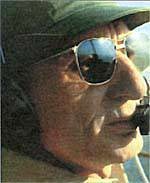 Earl Karl Gustav von Rosen
Earl Karl Gustav von RosenIt was a very remarkable personality - a brave man, a pilot "from God" and an adventurer in the original sense of the word. Back in the middle of 1930, he flew as part of the Red Cross mission in Ethiopia during the Italian aggression against this country. Then, in 1939, after the start of the Winter War between the USSR and Finland, von Rosen volunteered for the Finnish army. At the end of World War II, he became the organizer of the revived Ethiopian Air Force. And now the 60-year-old count decided to "shake old things" and signed up as a simple pilot for Transair to take risky flights to besieged Biafra.
But von Rosen would not be himself, if he were satisfied only with this - he wanted to fight. The count directly addressed the rebel leader Ojukwu with a proposal to organize an assault squadron in Biafra. The idea was as follows: he hires Swedish pilots and buys in Sweden (of course, with biathra money) several light Malmo training aircraft MFI-9B Militreiner. The choice of these training machines was far from accidental: in this way the count was going to circumvent the embargo on the supply of weapons to Biafra. At the same time, he knew perfectly well that the MFI-9B, despite its small size (span - 7,43, length - 5,45 m), was originally adapted for hanging two 68-millimeter NAR MATRA units, which makes an almost look-like airplane a good shock by car.
They reacted positively to the idea, and von Rosen energetically took off. Already in April, 1969, through several dummy firms, he bought and delivered five Malmo to Gabon. It should be noted that the government of Gabon very actively supported the rebels: for example, the Gabon Air Force transport aircraft transferred weapons and military equipment purchased by Ojukwu in “third countries”.
Along with von Rosen, there are four “wild geese” from Sweden: Gunnar Haglund, Martin Lang, Sigvard Torsten Nielsen and Bengst Weitz. Immediately the work of assembling and re-equipping the Militrainers began to boil (in Africa the plane received another nickname Minicon - the distorted English MiniCOIN, derived from COIN - anti-partisan. It is curious that the insurgents used anti-guerrilla anti-insurgency machines).
The aircraft were equipped with separately purchased NAR units and electrical equipment for launching rockets. In the cockpits installed sights with outdated Swedish fighter SAAB J-22, bought somewhere cheap. To increase the flight distance, instead of the second pilot's seats, additional fuel tanks were installed.
The work was adequately completed by the application of combat camouflage. There was no special aviation paint at hand, so the planes were painted with two-green car enamel found at the nearest car service station. Painted with a brush without stencils, so each plane was a unique example of painting art.
Later, they bought four more Minicons. They were no longer repainted, leaving civilian designations (M-14, M-41, M-47 and M-74), and were not equipped with additional gas tanks, as they were intended for training biathra pilots. Thus, the total number of "Minikonov" in the Air Force Biafry was nine cars.
In mid-May, five airplanes were transferred to the Eagle airfield near the front line. The first insurgent combat squadron under the command of von Rosen for the small size of their machines received the unofficial nickname "Biafran babies" ("Biafra Infants"). Her baptism of fire took place on May 22, when the whole five attacked the airport in Haricort. According to the mercenaries, as a result, three Nigerian aircraft were disabled and "large numbers" of manpower were destroyed. The Nigerians responded by saying that during the raid, the wing of one MiG-17 was damaged and several barrels of gasoline were blown up.
In the raid, the Swedes used the tactic of approaching the target at ultra-low (2-5 meters) height, which made it difficult to conduct anti-aircraft fire. Missile launch was made from horizontal flight. From takeoff and until the attack, the pilots observed radio silence. The Swedes were not at all afraid of the anti-aircraft guns, especially since according to the memoirs of General Obasanjo, who was already familiar to us, the entire south-eastern sector of the front from the Niger River to Calabar (which is almost 200 kilometers) the Feds had only two old Oerlikon. A much more serious threat was the fire of small arms. Often, the “Minikon” returned from a battle with bullet firing, and on one of the machines they once counted 12 holes. However, none of the bullets hurt the vital parts of the aircraft.
24 May attacked Benin City Airport. Here, according to the message of the mercenaries, they managed to destroy the MiG-17 and damage the IL-28. In fact, the passenger "Douglas" DC-4 of Pan African Airlines was destroyed. The rocket hit the nose of the aircraft.
26 May, the Swedes attacked the airfield at Enugu. The data on the results of the raid is again very contradictory. The pilots claimed that the Il-28 was heavily damaged or destroyed in the parking lot, and the Nigerian authorities stated that the former Biathrean Invader had finally been finished off, taken out of order in the 1967 year and since then peacefully standing on the edge of the airfield .
28 May Swedes "visited" the power plant in Ugeli, which supplied electricity to the entire south-eastern part of Nigeria. For such a large goal, it is impossible to miss, and the station was disabled for almost half a year.
After that, the patience of the feds burst. Almost the entire Nigerian aviation was redirected to the search and destruction of malicious “Minikon”. Several dozen bomb-assault strikes were inflicted on the supposed home sites of the “maize farmers”. Especially got the largest rebel airbase in Uli. June 2 missiles with MiG-17 there was destroyed DC-6 transporter. But the Nigerian pilots did not find the real airfield of the “babies of Biafra”.
Meanwhile, the first attacks of the Minikon provoked a strong reaction in the international media. The fact that mercenaries from Sweden are successfully fighting in Nigeria was blown up by newspapers all over the world. The Swedish Foreign Ministry, which was not at all interested in such “advertising,” insistently demanded that its citizens return to their homeland (especially since all of them, except von Rosen, were officially on the staff of the Air Force, and in Biafra they “spent their holidays”). Having made another “farewell” battle raid on 30 on the 2 anniversary of Biafra’s independence, law-abiding Swedes began packing their bags.
For Biafra, this was a serious blow, since by that time, only three local pilots had learned to fly on the “Minikon”, and none of them had any experience in combat shooting.
5 June 1969 The Nigerian Air Force won the first and only to date "aerial victory", knocking down the Douglas DC-7, which belonged to the Swedish Red Cross. Perhaps this reflected a desire to avenge the Swedes for the actions of their mercenaries in Biafra. According to the official version, this was the case. Captain Gbadamo-si King flew off to the MiG-17F in search of the "rebel plane", roughly knowing the direction of the flight of the aircraft, its speed and time of departure from Sao Tome. When the fuel was already coming to an end, the pilot discovered the target. The pilot of the "Douglas" did not obey the order to sit for inspection at Calabar or Harcourt, and the Nigerian shot him down.
All were aboard the plane - American David Brown pilot and three crew members - the Swedes. Nigerians subsequently announced that weapons had been found among the wreckage of the airliner. The Swedes protested, claiming that there were no military cargo on board, but as you know, the winners are not judged ...
After this incident, the Biathrians began to look for the possibility of purchasing fighters to escort the transport “sides” they needed so much. The exit, it seemed, was found after, through the front company Templewood Evolution, in the UK, they managed to acquire two Meteor fighters NF.11. However, they did not get into Biafra. One "Meteor" disappeared without a trace when flying from Bordeaux to Bissau, and the second on November 10 fell into the water due to a shortage of fuel near Cape Cape Verde. A mercenary pilot, a Dutchman by nationality, escaped. This story had a continuation: four employees of Templewood Aviation in April 1970 were arrested by the British authorities and convicted of arms smuggling.
Meanwhile, the government army, gathering its strength, again launched an offensive. The territory of Biafra slowly but steadily declined. 16 June 1969 of the year was captured by the Augu airfield. The Biathrians have only one hard-surfaced runway left, suitable for taking off and landing heavy aircraft. The site of the federal highway Uli-Ihalia, also known as the “Annabel airport”, became a symbol of Biafra’s independence and at the same time its main target for government forces. Everyone understood that if Uli fell, then without help from outside, the rebels would not last long.
The “hunt” of the federal air forces for foreign airliners, which, contrary to all bans, continued to arrive in Annabel, did not stop until the very end of the war. We give a "chronicle of achievements" of the Nigerian pilots in this matter. In July, the 1969-th missiles with the MiG-17F were destroyed in the parking lot by the C-54 Skymaster. November 2 bombs covered another transporter - DC-6, and December 17 also killed the transport and passenger Super Constellation under the bombs.
In total, over the two years of the Biafra Air Bridge’s existence, 5513 flights were flown to the territory of the unrecognized republic and 61000 tons of various cargoes were delivered. Six or seven aircraft crashed in accidents and disasters, five more were destroyed by Nigerians.
In July, von Rosen with another Swedish pilot returned to Biafra, but they did not participate in combat missions, focusing on training local personnel. Until the end of the war, they managed to prepare nine Africans to fly on the Minikon. Two of them died in the battles, and one later became the chief pilot of the Nigerian Airways. At the end of the war, the famous German mercenary Fred Hertz also flew on one of the Minikon.
In August, the Biathrians launched an operation to undermine oil exports from Nigeria by destroying the infrastructure of the oil industry. The five Minikonov raids on the Gulf Oil campaign pumping station and the federal air force helicopter landing site at the mouth of the Eskravos River were best known.
During the raid, the pumping station was damaged, the storage tank was broken and three helicopters were damaged. In addition, there were attacks on oil barges and oil pumping stations in Ugeli, Kvale, Kokori and Harikort. But by and large, all these “pin shots” could not seriously affect the oil business of the Nigerian authorities, which gave them the means to continue the war.
The official Biafra report on the first 29 sorties made on the “Minikon” by African and Swedish pilots from 22 in May to the end of August in 1969 has been preserved. It follows from it that the “infants of Biafra” launched 432 missiles at the enemy, destroying three MiG-17Fs (another one was damaged), one IL-28, one twin-engined transport aircraft, one Intruder, one Canberra (in Nigeria, not was - author's note), two helicopters (one damaged), two anti-aircraft installations, seven trucks, one radar, one command post and more 500 soldiers and officers of the enemy. From a long list of “destroyed” aircraft equipment, it is possible to confirm with certainty that the long-decommissioned Intruder and transport worker, though not two, but four-engine.
The first loss of the “babies of Biafra” was suffered by 28 November, when, during an attack on the positions of federal troops near the village of Obiofu to the west of Owerri, one of the “Minikon” was shot down by machine-gun fire. Pilot Alex Abgafuna died. The following month, the feds nevertheless managed to “calculate” the “babies” take-off area. During the MiGs' raid on the airfield, the Eagle successfully dropped a bomb and destroyed two MFI-9Bs and damaged another, but it was still managed to be repaired.
The fourth "Minikon" died 4 January 1970 th. In the next attack, which, as always, was done on a shaving pilot Ibi Brown crashed into a tree. The last battle "Minikon", remaining with the rebels, government forces captured after the surrender of Biafra. Now the fuselage of this aircraft is exhibited in the Nigerian National Military Museum. Nigerians also got two unarmed training MFI-9B. Their fate is unknown.
Let's go back, however, a little back. In July, the 1969 th Biathrian Air Force received a substantial replenishment. The Portuguese “friends of Biafra” managed to purchase X-NUMX multi-purpose T-12G Harvard (Texan) aircraft in France. These reliable, unpretentious and, not least, cheap training and combat vehicles were actively used in almost all the partisan and anti-partisan wars in Africa in the 6-s. For 1960 dollars a month, Portuguese pilots-mercenaries Arthur Alvis Pereira, Gil Pinto de Saus, José Eduardo Peralto and Armando Cro Braz expressed a desire to fly on them.
In September, the first four "Harvard" arrived in Abidjan. On the last leg of the road to Biafra, one of the Portuguese was not lucky. Gil Pinto de Sausa was strayed off course and mistakenly sat in a territory controlled by Nigerian troops. The pilot was taken prisoner and remained in prison until the end of the war. His photographs were used by Nigerians for propaganda purposes, as another proof that the biathrian air force uses the services of mercenaries.
The remaining three cars safely reached their destination. In Biafra, they were equipped with wing containers with four MAC 52 machine guns and universal pylons for hanging two 50-kilogram bombs or 68-mm NAR SNEB blocks. On the aircraft inflicted rather intricate camouflage, but did not bother to draw identification marks. The Uga field airfield was chosen as the home of the Harvards (after the feds bombed the Eagle airfield, the surviving Minikons flew there).
In October, the remaining aircraft were driven into Biafra, and two more joined the three Portuguese - José Manuel Ferreira and José da Cunha Pinatelli.
From the "Harvard" formed assault squadron, headed by Arthur Alvis Pereira. In addition to the Portuguese, it included several local pilots. In early October, the squadron entered the fighting. Due to the increased anti-aircraft defense of government troops and MiG air patrols, Harvardy was decided to use only at night and at dusk. The first combat sortie made, as it should be, squadron commander Pereira. The gunner on his plane was a local mechanic, Johnny Chuko. Pereira dropped bombs on the Nigerian barracks in Onicha.
Subsequently, the mercenaries bombed the federal forces in Onich, Kharikurt, Abe, Calabar and other settlements. Landing lights are sometimes used to highlight targets. The Harvard Four raid at the Harikort 10 airfield in November, where the Portuguese managed to destroy the terminal building, destroy the DC-4 transporter, and also seriously damage the MiG-17 and L-29, received the greatest fame. In this raid, Pereira tried to knock down the MiG-17, who was on duty over the airfield, but the Nigerian pilot missed, and upon re-entering failed to detect the enemy again. It is curious that the African press wrote that attacks on Kharikurt and Calabar were making ... "Thunderbolts."
Despite the fact that most flights were performed at night, losses could not be avoided. In December, the pilot Pinatelli did not return to the airfield. What happened to him, remained unexplained, either anti-aircraft guns came under fire, or the worn out technique failed, or he himself made a fatal mistake. In favor of the latest version, by the way, says that the Portuguese, in order to "relieve stress", actively leaned on the local moonshine "th".
One "Harvard" was destroyed on the ground. Here is an excerpt from the memoirs of Egyptian Pilot Major General (Retired) Nabil Shahri, who flew over Biafra on the MiG-17:
“During my business trip to Nigeria, I made many reconnaissance and attack missions. One flight I remembered very well. During the raid, I found a camouflaged aircraft on the runway. Despite the powerful fire from the ground, I shot him from the side guns. I think it was one of Count Rosen’s planes that caused the Nigerians a lot of trouble. ” The error of Nabil Shahri is not surprising: not only he, but also the command of the Nigerian army in those days believed that all the pilots-mercenaries in Biafra were subject to Count von Rosen, whose name was known on both sides of the front line.
But the main enemy of the Portuguese squadron was still not MiGs, not anti-aircraft guns of the federal troops, but trivial breakdowns and the lack of spare parts. For some time, some of the aircraft could be maintained in combat readiness by disassembling the rest, but this “reserve” gradually dried up. As a result, by the beginning of 1970, only one Harvard could take off. On January 13, after hearing about the surrender of Biafra on the radio, Arthur Alves Pereira flew to Gabon on it.
The fall of Biafra was preceded by a large-scale offensive by a government army commanded by General Obasanjo. The operation began on December 22 1969. Her goal was to cut the territory under the rebel control from the north and south and seize the temporary capital of Biafra, Umuahia. The operation involved troops total 180 thousands of people with heavy artillery, aircraft and armored vehicles.
To parry the blow, the unrecognized republic no longer had either the strength or the means. By that time, Biafra's army comprised about 70 thousands of hungry and ragged fighters, whose daily ration consisted of a piece of boiled pumpkin.
On the very first day, the feds broke through the front, and on December 25, the northern and southern groups merged in the Umuahia region. Soon the city was taken. The territory of the rebels was cut in two. After that, it became clear to all that the days of Biafra were numbered.
For the final defeat of the rebels, Obasanjo undertook another, the last operation in the war, codenamed “Tailwind”. 7 January 1970, the Nigerian army struck from the southeast on Uli. On January 9, the Annabel runway was within the reach of 122-mm guns recently received by Nigerians from the Soviet Union. This was the last day of the Biafra air bridge. And the next morning, jubilant Nigerian soldiers were already dancing on the airfield of the airfield.
On the night of 10 on 11 in January, President Ojukwu with his family and several members of the Biafra government fled the country on a Super Constellation aircraft, which somehow miraculously managed to take off from the highway in the Eagle region. On 6 in the morning of January 11, the plane landed at a military airfield in Abidjan.
On January 12, General Philip Efiong, who assumed the responsibility of the interim leader of Biafra, signed an act of unconditional surrender of his republic.
The civil war is over. According to various estimates, it killed from 700 thousand to two million people, most of whom were residents of Biafra, who died of starvation and disease.
Losses aviation Biafra we have already discussed in detail in the article. The question of the loss of the federal air force is more complicated. No lists and numbers on this account could not be found. Officially, the Nigerian Air Force recognized only one Dolphin, shot down by anti-aircraft guns in 1968 year. Meanwhile, the Biathrians claimed that only in the area of the Uli airfield did their air defense hit NNFX fighters and bombers with 11. Analyzing various data, most authors are inclined to believe that the total number of Nigerians lost about two dozen combat and combat trainers, most of which crashed in accidents. The commander of federal aviation Colonel Shittu Alao, who crashed while carrying out a training flight on an L-29, also became a victim of a plane crash.
In conclusion, let us briefly describe the further fate of some of the heroes of our article. The winner of Biafra, General Obasanjo, was elected President of Nigeria in 1999, he recently paid an official visit to Russia and met with President Putin.
The separatist leader Ojukwu lived in exile until 1982, then was pardoned by the Nigerian authorities, returned to his homeland, and even joined the ruling National Party.
The commander of Biafra Aviation Godwin Ezelio fled to Ivory Coast (Ivory Coast), and from there he moved to Angola, where he organized a small private airline.
Earl Karl-Gustav von Rosen returned to Sweden, but soon his restless nature showed itself again. Upon learning of the beginning of the Ethiopian-Somali war, he flew to Ethiopia with the mission of the Swedish Red Cross. In 1977, the count was killed in the city of Gode by Somali commandos.
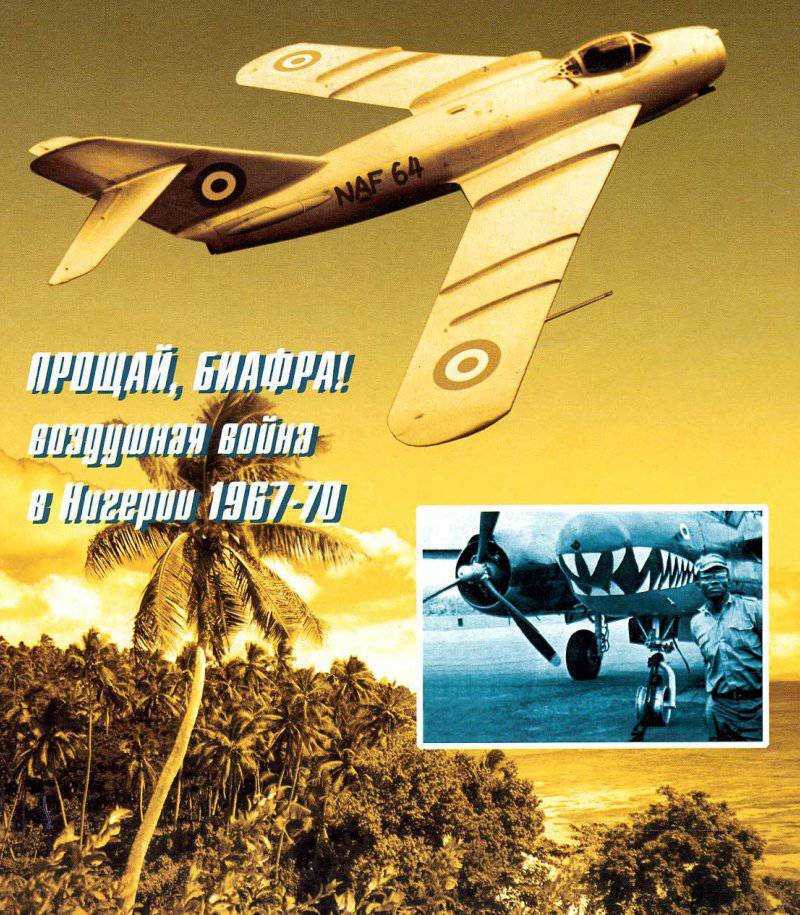
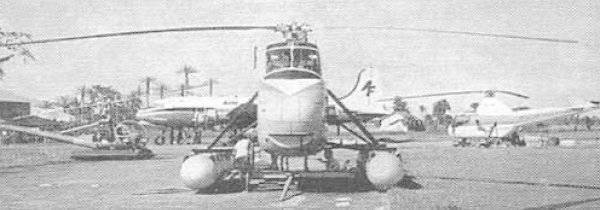
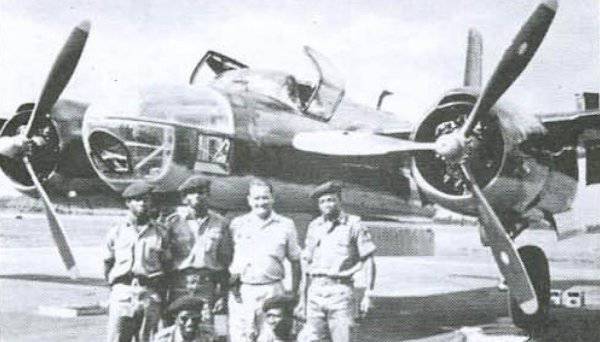
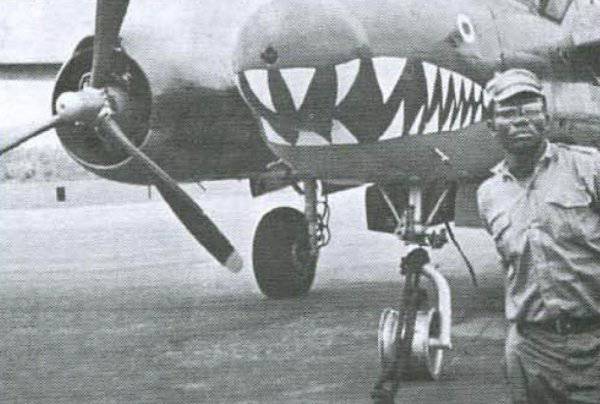
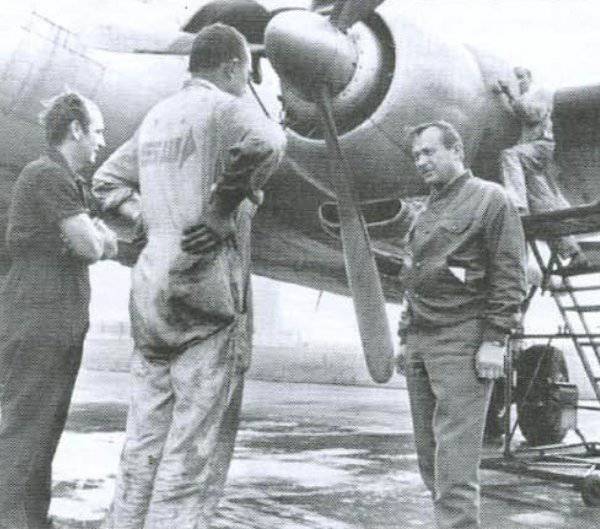
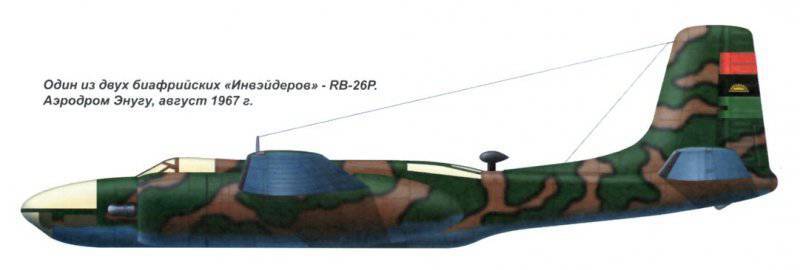
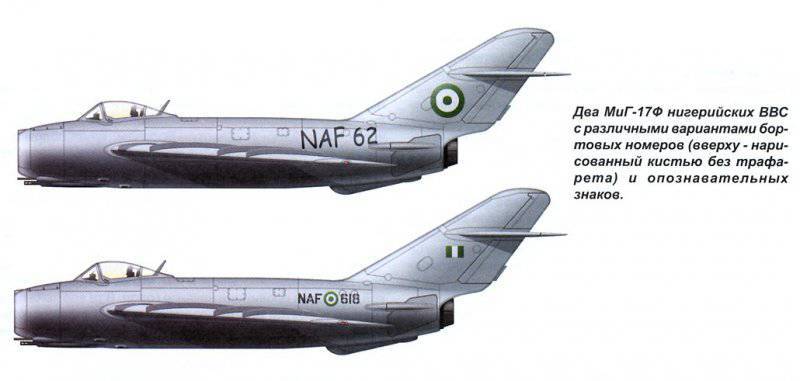
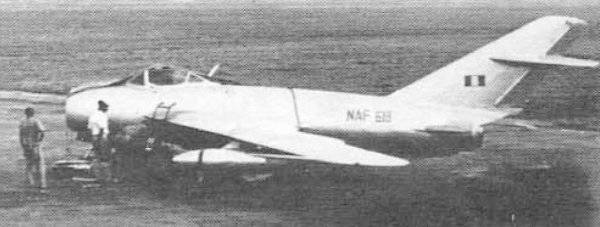
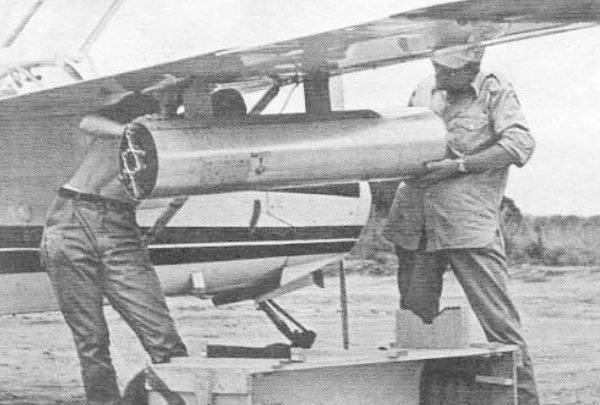
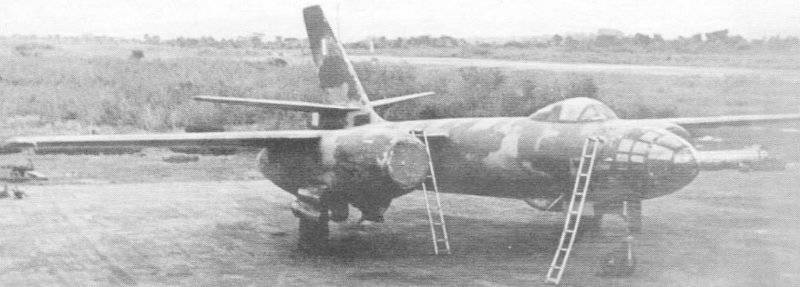
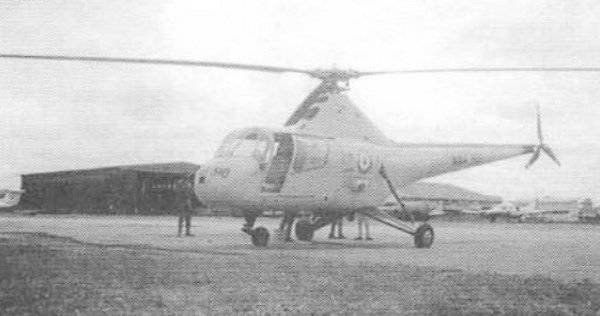
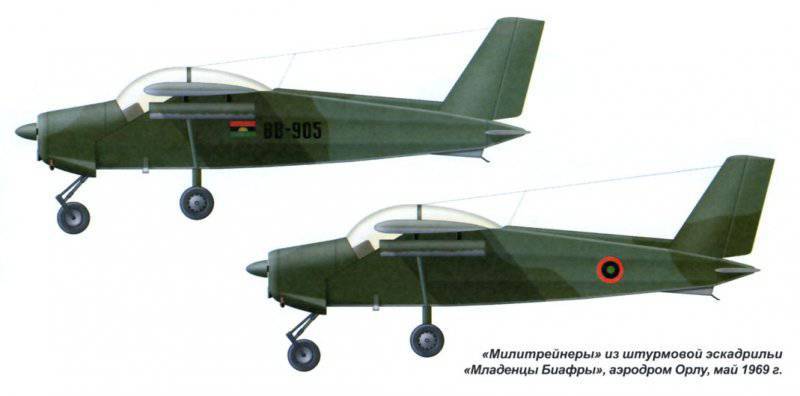
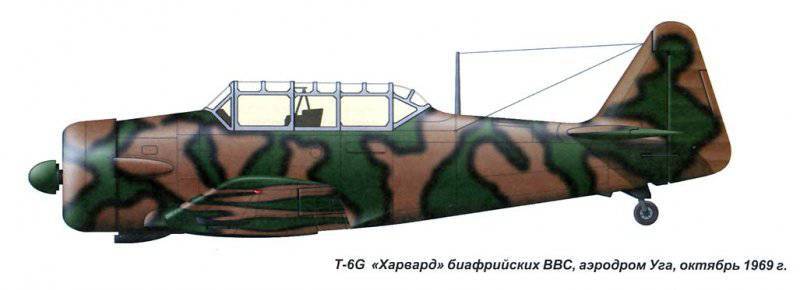
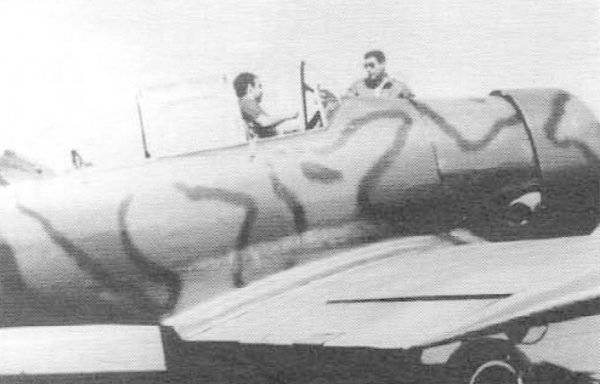
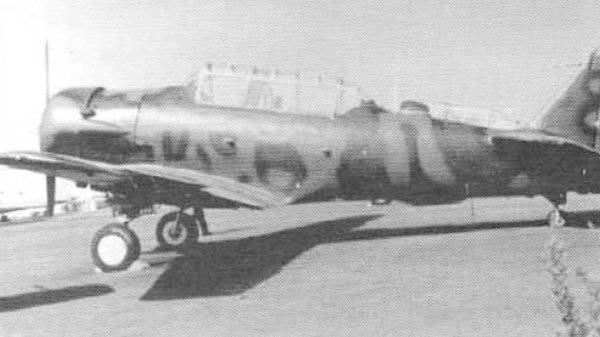
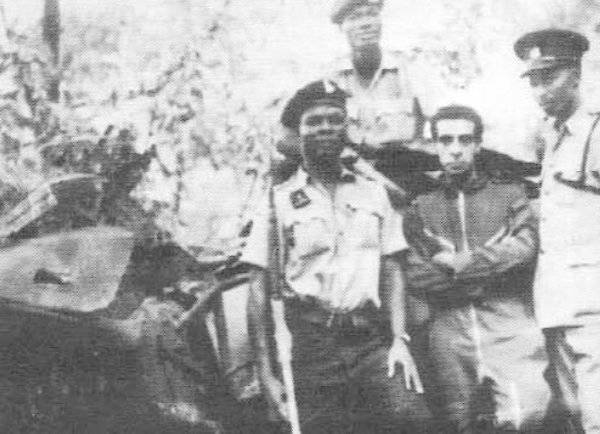
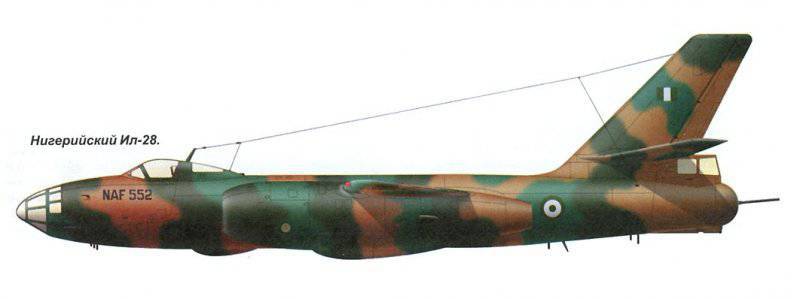
Information